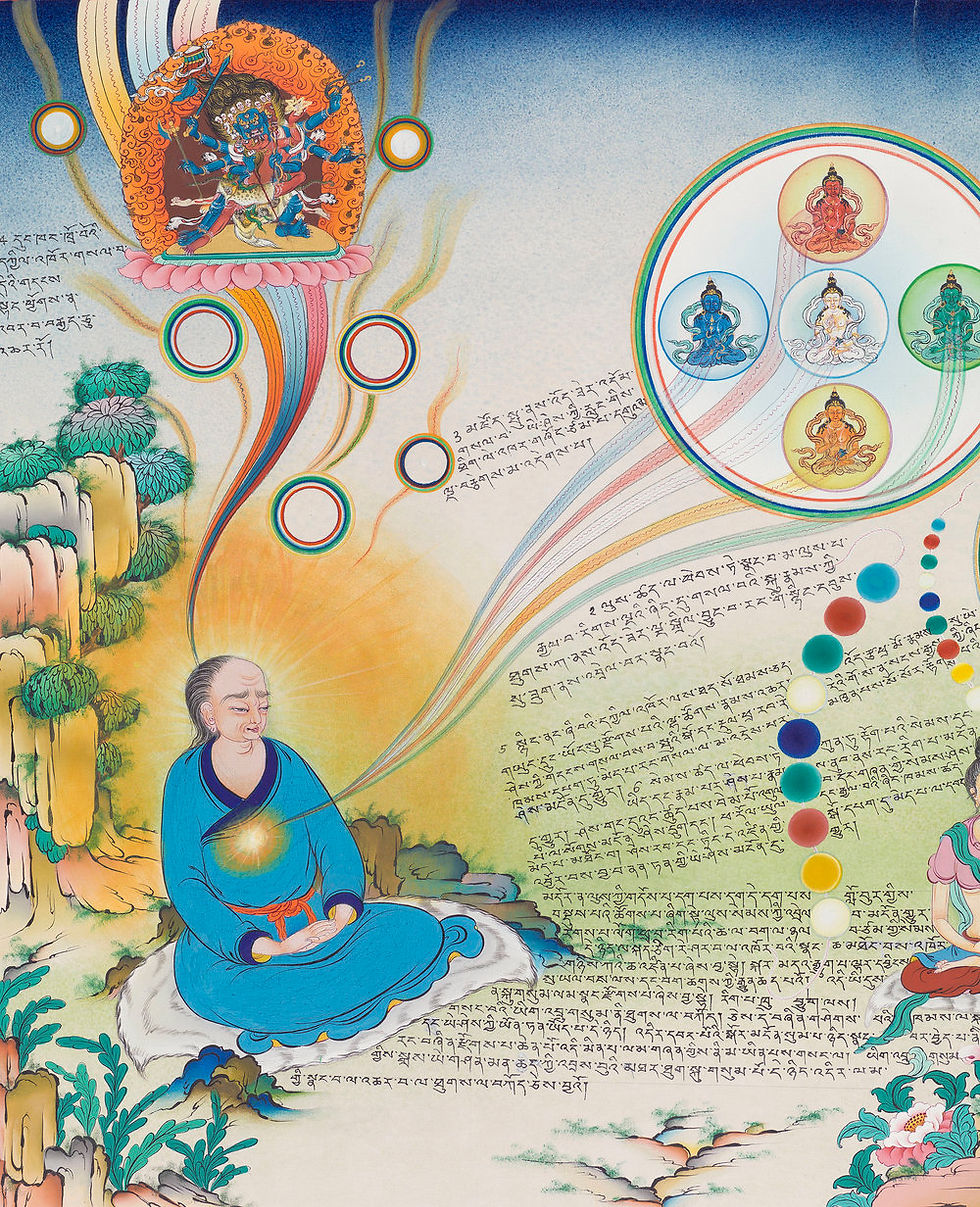Rainbow BodyA groundbreaking study of Rainbow Body in the Bön tradition
- mijin lee

- Jan 10, 2021
- 2 min read

The attainment of Rainbow Body, the ultimate fruit (p. 211)
In 2008, Loel Guinness completed a Masters dissertation at the University of Oxford on the subject of “Rainbow Body” (jalü), one of the most esoteric aspects of the Bön religion. He later expanded this preliminary study into a much more substantial work, and the final result was published in 2018 under the title Rainbow Body (Chicago, Serindia Publications, 2018). In his foreword to the book, Yongdzin Tenzin Namdak Rinpoche concludes with the observation that “Mr Loel Guinness, the author of the present work, has had a long immersion in these matters, and has investigated them over a considerable period of time both as a practitioner and as a researcher.”


Rainbow body refers to the phenomenon, familiar to all Tibetans, whereby the physical bodies of highly-accomplished masters of the spiritual tradition known as Dzogchen (lit. “Great Completion”) are said to dissolve into non-corporeality. In some rare cases this dissolution is complete, and no trace whatsoever of the physical body is left behind. But in many other cases, only the hair and nails of the master are reported to remain. And in still others, the physical body does not actually disappear, but instead a radical shrinkage of remains are witnessed. Attested cases of rainbow body span Tibet’s entire history. They stretch back well over a thou- sand years to the beginnings of Tibetan writing and recorded history, and beyond that into Tibet’s uncharted pre-literate past, when stories of rainbow body were preserved only through oral tradition. However, it is by no means a phenomenon confined to a legendary or mythical past, and cases continue to be reported.

The spontaneous purification of the subtle channels and energies as part of the visionary experience. (p.192)
In this groundbreaking study of rainbow body in the Bön tradition, the neophyte reader is guided into the profound insights of Dzogchen, while all the components required to understand this most mysterious and enigmatic of phenomena are set out clearly and methodically. Illustrated by unique thangkas (scroll paintings) commissioned specially for this study, the books’ emphasis is on clarity of exposition. Simple enough for the layman, but detailed enough to do justice to these ancient and subtle traditions, Rainbow Body serves both as an introduction to Dzochen and as a groundbreaking study, based on Tibetan textual sources, of its ultimate fruit. It is offered to the public in the hope that as many people as possible might benefit from the profundity of this ancient wisdom. As Loel Guinness states in his preface, “Dzogchen is not just for monks. It is as suitable for the businessman, the academic, or the practitioner. The insights of Dzogchen are relevant for all.”







Comments